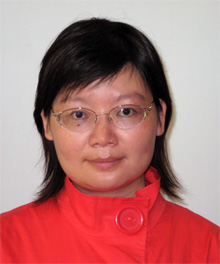Welcome to Fan Research Group !
One of the major trends that impact the human society in 21st century is a transition toward a sustainable society. Our group seeks to support such a transition through innovative research at the frontiers of both the fundamental and applied fields of renewable resources utilization and value-added products production. Our research program aims at developing biocatalysts and bio-catalytic strategies to convert abundant renewable resources into valuable products economically and with a minimal impact on the environment.
Fan Lab members
Research Projects
1) Conversion of cellulosic biomass to value-added products
The conventional process for fuels and chemicals production from cellulosic biomass involves four steps: pretreatment, cellulase production, enzymatic hydrolysis to make sugars, fermentation to produce fuels and chemicals sugars. Cellulase production or purchase represents a substantial portion of processing costs. Our lab proposes a new route for biofuels and chemicals production from cellulosic biomass. In this new process, an engineered fungal strain converts pretreated cellulosic biomass to sugars acids, bypassing the need for cellulase addition. The sugar acids serve as the substrate for the subsequent conversion step.
2) Conversion of sugar acids to fuels and chemicals
Sugars are the common fermentation substrate for fuels and chemicals production. We were excited to find out that sugar acids have some advantages over sugars to serve as a fermentation substrate for fuels and chemicals production. We are aiming to develop recombinant bacterial strains to achieve such conversion.
3) Conversion of almond hulls to protein-enriched poultry feed supplement
The conversion process will use almonds hulls as a substrate to produce fungal biomass through solid-state fermentation. By supplementing nutrients and fungal spores, fungi can grow on almond hulls. They will consume most of the free sugars and the carbohydrate fibers (cellulose, hemicellulose, and pectin) in the hulls to produce more fungal biomass, which contains 40-50% crude protein. The fermentation residue may contain protein high enough to serve as a poultry feed supplement.











